
Cat body language explained

Lucy Hoile
12 January 2024 | 7 minutes read
Have you wondered what it means when your cat’s tail flicks around, their ears prick up, or they’re blinking at you?
Read on to learn from expert cat behaviourist Lucy Hoile exactly what your expressive feline’s body language is telling you.
- Why do cats communicate through body language?
- How to read your cat’s body language
- Understanding your cat’s emotions through their body language
> Sick cat body language
> Stressed/anxious cat body language
> Is your cat playing or fighting? - How to do a consent test with your cat
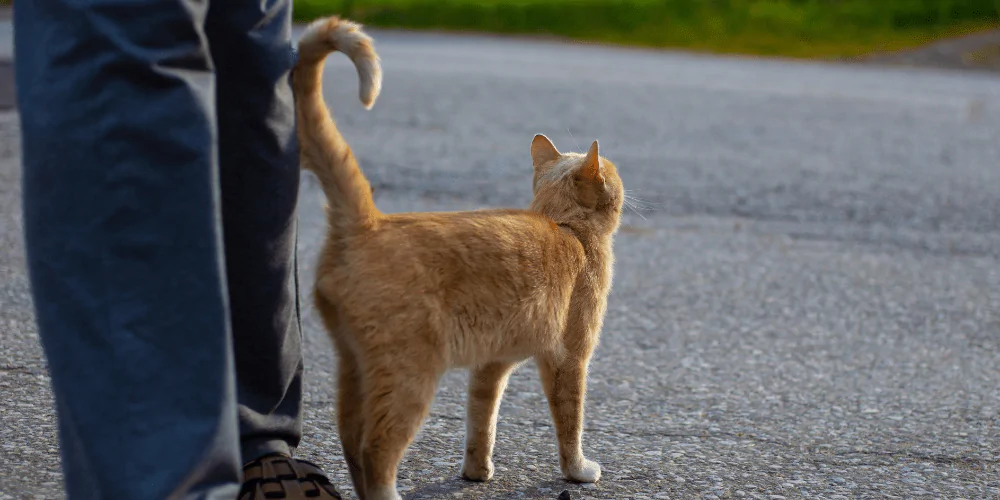
Why do cats communicate through body language?
Cats come from a solitary species and haven’t historically needed to develop many face-to-face communication skills.
While dogs show appeasement behaviour and learn how to ease tension, cats tend to want to avoid conflict at all costs (can’t blame them really!).
Their main goal in life is to keep themselves safe and not get injured. That’s why using long-distance communication like scent marking, vocalisations and body language works for them. It’s much less risky than communicating face-to-face.
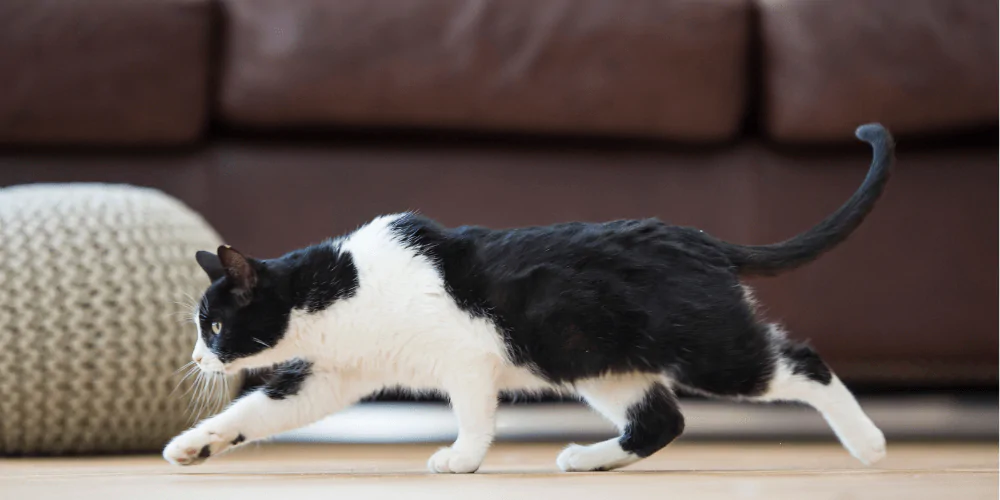
How to read your cat’s body language
When it comes to reading your feline’s body language, there are a few important things to always keep in mind.
- Context is everything, so think about the situation or environment your cat is in when they’re behaving a certain way.
- Don’t just look at body parts individually as this won’t give you the whole picture about what they’re trying to tell you.
- Sometimes the same behaviour of a body part can mean different things in different situations. For example, your cat can swish their tail during play or when they’re annoyed.
- Understand what’s normal behaviour for your cat to help you recognise when they’re not acting like themselves.
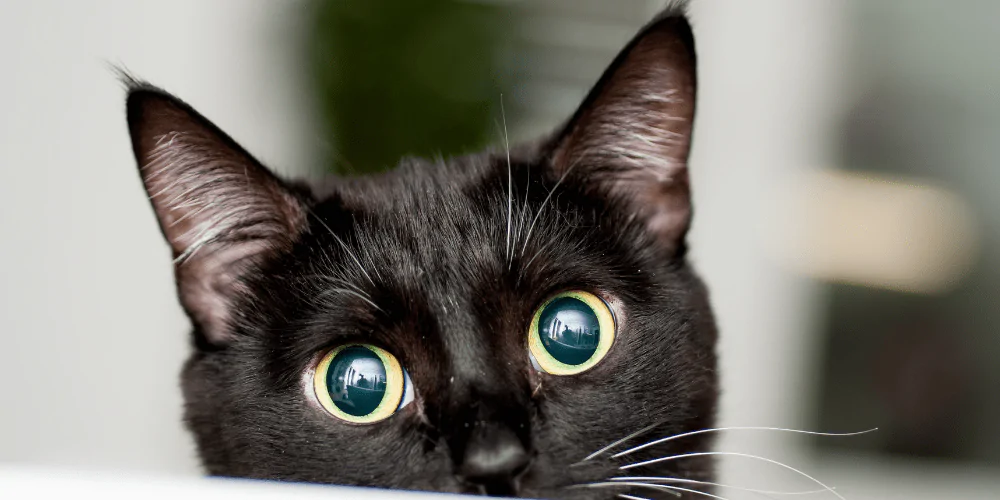
> Cat eyes
The first thing we can look at is our cat’s eyes, including what’s happening with the shape and the pupil.
- Slow blinking – this is the perfect friendly and relaxed behaviour from a cat, so feel free to do this back to them.
- Squinting – this could mean that a cat is in pain.
- Wide eyes and enlarged pupils – this can happen if they’re scared or there’s poor lighting (like at nighttime).
- Wide eyes and narrowed pupils – this is normally how a cat’s eyes look when they’re hunting.
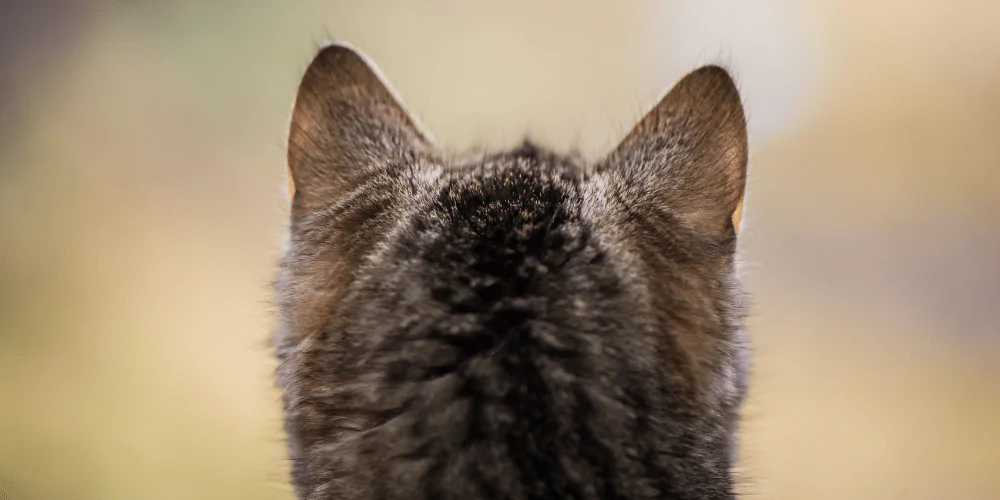
> Cat ears
Some cats – such as the Scottish Fold – may struggle to communicate body language through their ears because of their breed. For those who can, look out for ears that are:
- Upright and pointing forward – this is how a cat’s ears will sit when they’re feeling relaxed.
- Turned in another direction – if something has caught a cat’s interest, they’ll turn one or both ears towards it (which helps with hunting).
- Slightly turned down to make a flat line across the head – this is a sign of frustration or annoyance, such as being stroked for too long.
- Turned back and almost flat against the head – this is usually a sign of fear.
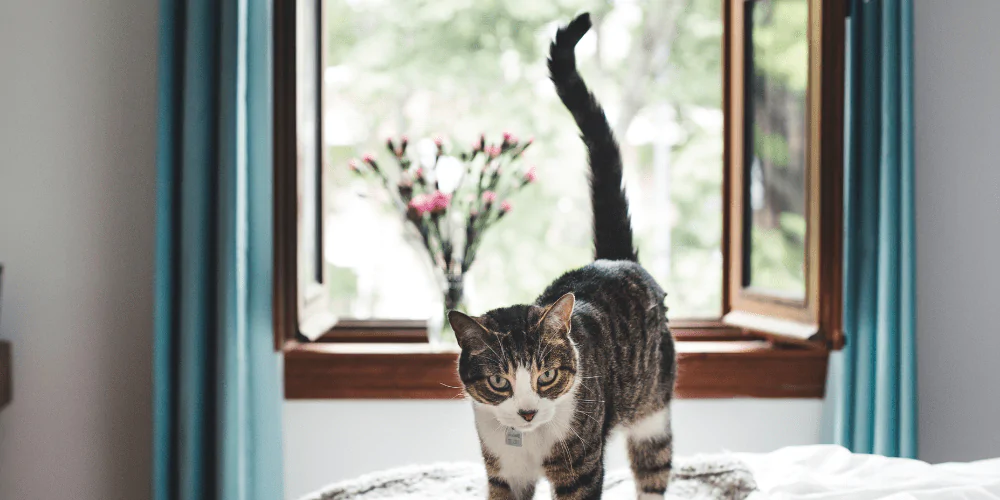
> Cat tail
The tail is a major part of body language for a cat.
- Question mark shape – this is where the tail is held upright with a curl at the top and shows friendliness.
- Straight – this shows a cat is a little wary, unsure, or trying to suss you out.
- Tucked under the legs/feet – this is a sign that a cat is scared.
- Upright and quivering – an ambiguous behaviour that often happens when they urine mark. This can be a sign of high arousal or anticipation and may be accompanied by paw padding.
- Mild end of tail twitching – this is the first sign that a cat is getting annoyed.
- Heavy swishing/thumping – whether up and down or side to side, heavy swishing is a sign that they’re getting very riled up. Try not to interact with them in this state, even to reassure them.
- Upright with the hair standing on end – this is another sign that a cat is alert and scared.
Some cats can develop a condition called hyperesthesia. It creates sensitivity in the skin and causes your cat’s tail to flick around for no reason. It’s difficult to treat this condition but your vet can give your cat medication to help manage the symptoms.
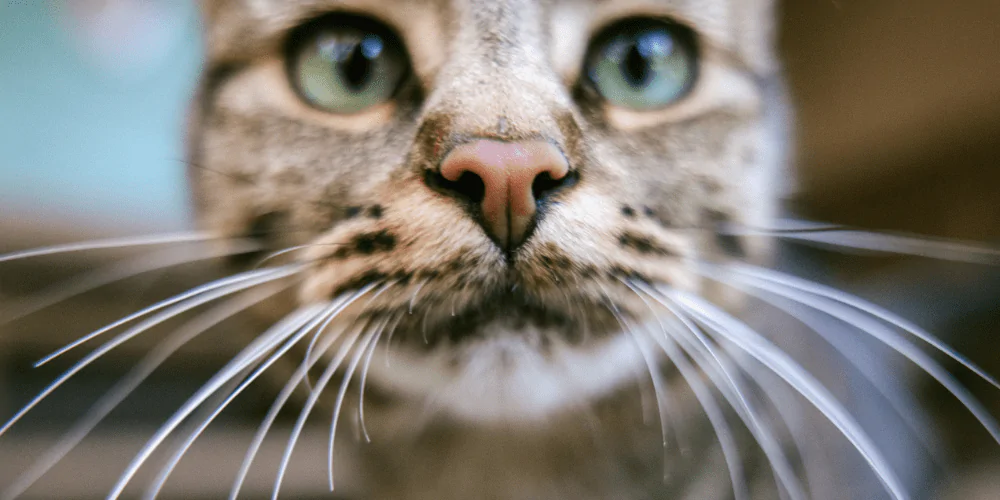
> Cat whiskers
Cats rely on their whiskers to help them interact with the world. The movement of whiskers is very subtle and almost unnoticeable at times, making them harder to read.
- Pulled back against the face – usually a sign that a cat is scared.
- Sitting in a neutral position to the side – this is how the whiskers sit when a cat is relaxed.
- Fanning forward – this happens while hunting to tell a cat about its prey, including what they’ve caught, how big it is, and if it’s still moving.
Here’s a few more fun facts about whiskers:
- They’re mainly placed around the face but can also be found on the back of the paws.
- Whiskers are embedded more deeply into the skin than regular fur and packed with nerve endings – so never pull them out or trim them.
- They use airflow to detect if something’s in the way or to judge spacing, such as a gap in a fence.
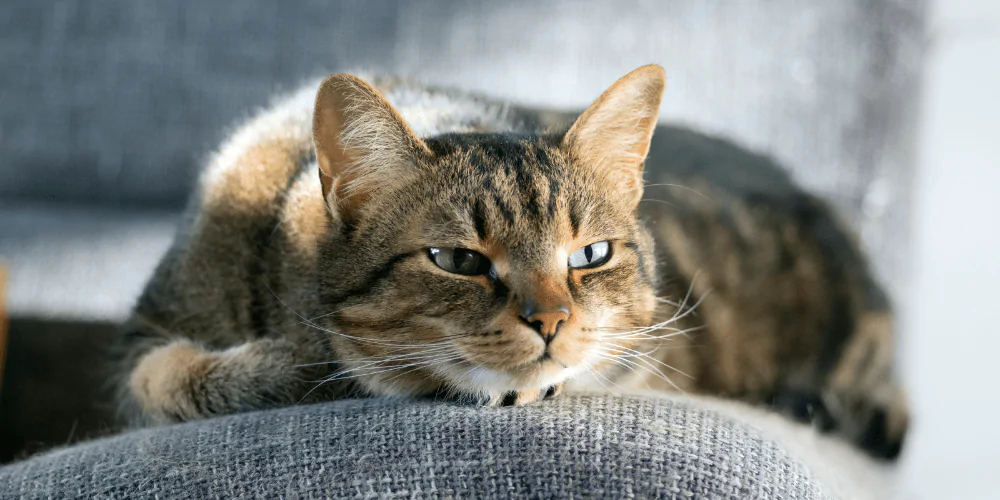
Understanding your cat’s emotions through their body language
Now that we know how to read the individual parts of a cat’s body language, let’s put it all together. This will help you better understand how your cat is feeling.
> Sick cat body language
If your cat is sick, you may notice:
- Half-closed eyes and very dilated pupils
- Ears slightly turned backwards, so you can see some of the back of the ear from the front
- A hunched-over posture where the head is held below the shoulders and the tail tucked under
- A tight and clenched muzzle
Some cats may also pretend to sleep if they’re not feeling well. You can tell they’re not asleep as their ears will still move around to follow noises.
Aside from their body language, other signs of discomfort or pain in your cat include:
- Loss of appetite
- Increased sleep
- Inability to relax
- An intolerance to handling or increased aggression
- Excessive grooming
Toileting in unwanted places can also be caused by a medical issue, so always speak to your vet about this first. Having cat insurance in place can cover your feline for common issues like urine problems.
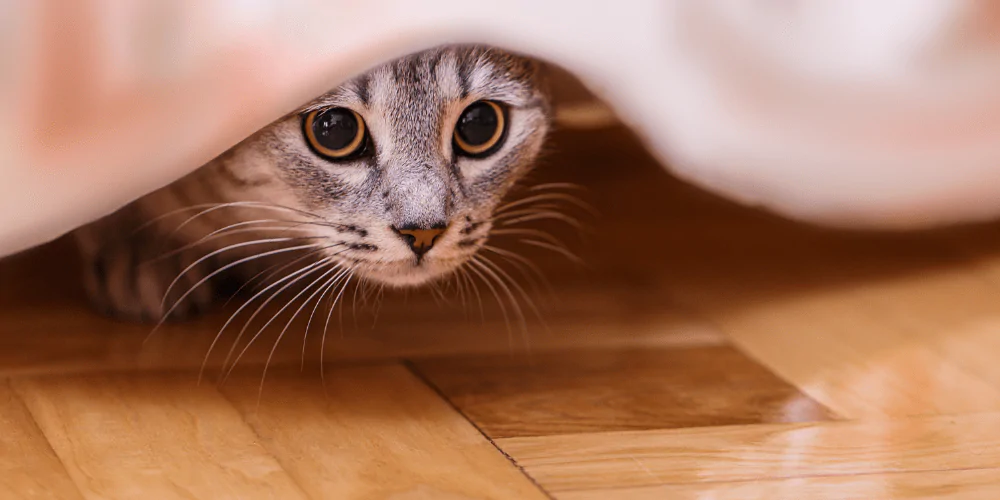
> Stressed/anxious cat body language
You can tell your cat is stressed or anxious by behaviour such as:
- Retreating into a hiding place and making their body as small as possible
- Swallowing, yawning, and licking
- Ears and whiskers pull back from the face
- Slinking low to the ground and holding their tail low
If your cat is scared, their body language can include:
- An arched back
- Fur standing on end along their back
Behavioural problems such as aggression, nervousness, and inappropriate toileting often come from an unhappy cat. This is where a professional feline behaviourist should be brought in to help.
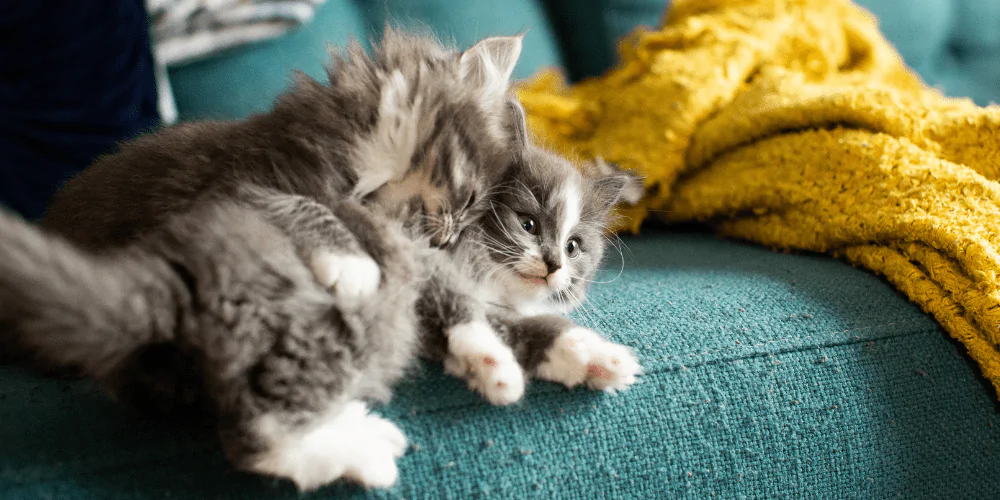
> Is your cat playing or fighting?
Telling the difference between playful and fighting cats isn’t easy as you’ll often see the same behaviours:
- Wrestling
- Chasing
- Biting faces
- Kicking
- Raking the stomach with the back legs
- Swishing tails
You’ll know when cats are fighting because there will also be:
- Hissing and yowling beforehand
- Caterwauling while they’re getting physical
- Everything is one-sided (one cat is always chasing and biting the other)
- Fur standing up on end
Play is more bouncy and fun with each cat taking it in turns to be the chaser and the chased.
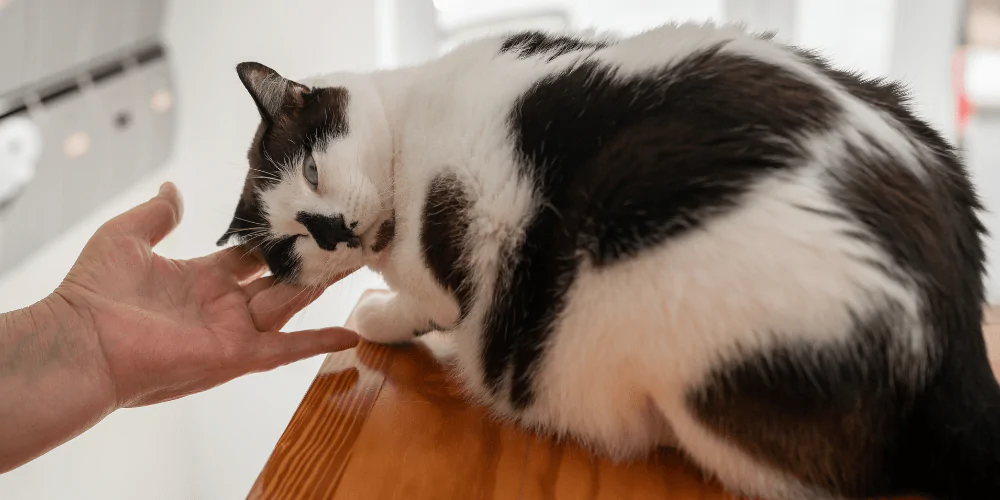
How to do a consent test with your cat
Wanting to understand your cat’s body language is a great way to be respectful of how they’re feeling.
Another way to show your cat respect before any physical interactions is to do a consent test.
- Rub your fingers together or call your cat to get their attention, then hold out your hand.
- Walking towards you and facial marking your hand is a great sign your cat wants to interact and be stroked.
- After a few seconds, stop stroking and see what your cat does. If they don’t seek out your hand, they ignore you, or they walk away, it’s a sign they don’t want to be stroked.


